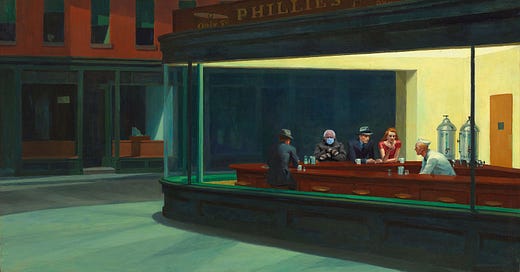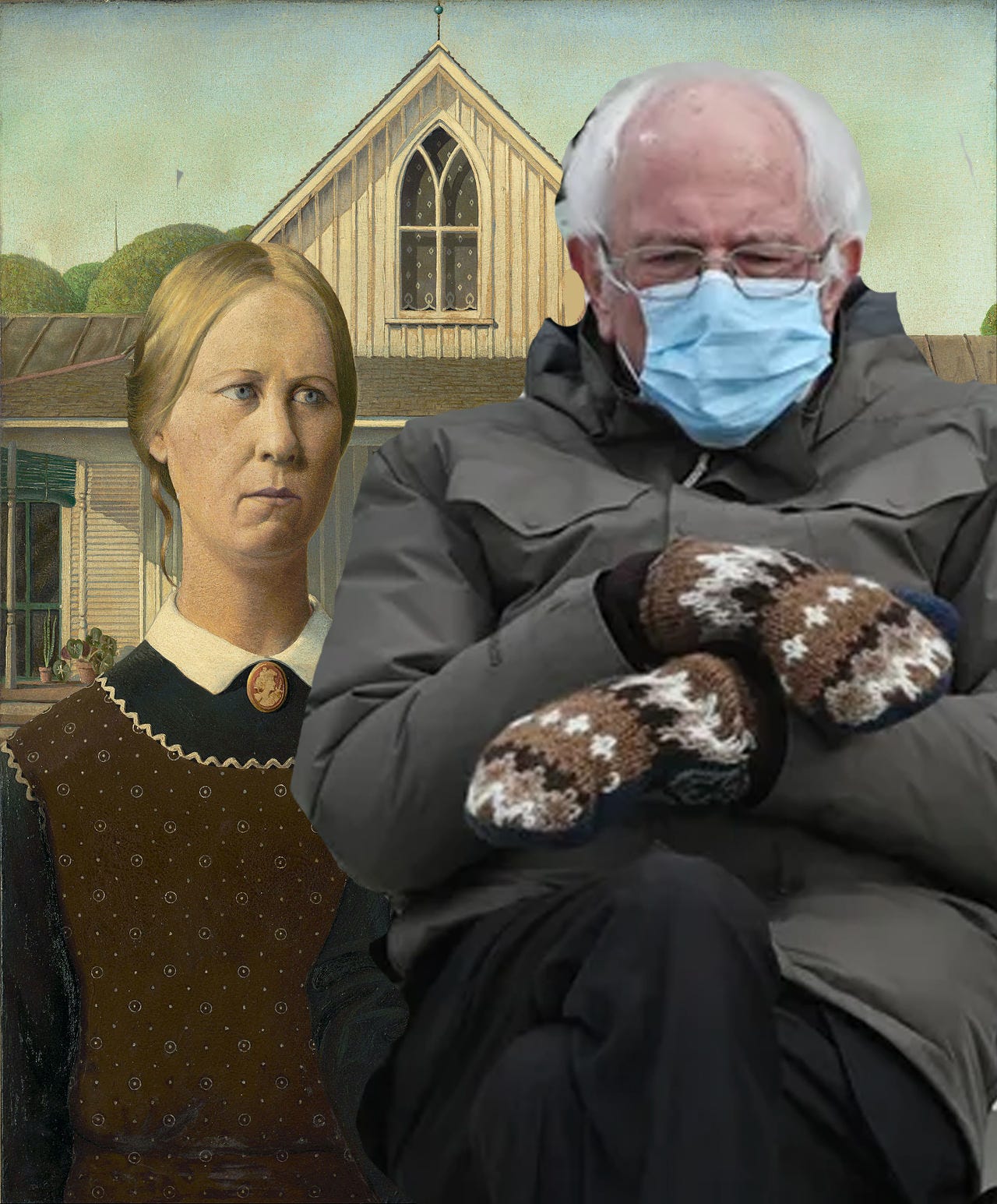Wednesday morning was dominated by the background rumbling around Inauguration. We all were deeply shaken by the events of January 6, and during this unprecedented period we were not sure what would transpire this time. Would we see violence in state houses? Would there be a terrorist attack? Would we be surprised in the same way in which we saw the riot at the Capitol? In spite of the heavy militarized presence in Washington DC I still did not feel reassured.
Wednesday was also my first day of teaching in a new full-time university job. I had spent the last few weeks very involved in preparing, trying to make sure all would go well in my morning class. I am a seasoned educator, but this moment was truly significant for me. All in all, it was, to say the least, a day full of anticipation and concern.
But the morning came, Trump gave a speech to a handful of fans, got on his plane, and flew away. As he himself once predicted about the virus, like a miracle, he disappeared.
When I finished teaching my class— and it all went well, to my great relief— I walked to my neighborhood diner to pick up a salad for lunch. As I walked in the restaurant, I saw the Inauguration fully underway on live TV. Kamala Harris was being sworn in by Supreme Justice Sonia Sotomayor. I choked up with tears: after four years of racism, bigotry, hatred, violence and the increasingly horrifying encroachment of a fascist state onto our society, after four years that felt like a period of daily emotional abuse, democracy had prevailed. And a Black woman was being sworn Vice President by a Latina Supreme Court justice. It felt overwhelming; a moment in which trepidation and tension suddenly dissipated in an indescribable release, a lifting of a massive weight. The tyrant was finally gone.
The rest of the day was mostly a celebration. The jokes were flying; the excitement and relief was palpable everywhere in the interactions we had among our friends and family that day. The return to normal life felt oddly abnormal.
And it was around that time when Bernie Sanders’ photograph, of him sitting at the inauguration with his disposable blue face mask on, his patterned wooly mittens and his inelegant winter coat, more appropriate for camping in a Vermont’s State Park than for a presidential inauguration event, became a meme sensation. The next day everyone started making memes of Sanders strategically placed in historic and contemporary scenes (the World War II Yalta Conference, a fly-sized Bernie on Mike Pence’s head, tending a New York City hot dog stand, and even amidst the moon landing). Of course, the art historical references did not take long to come. We saw Bernie sitting in front of Marina Abramovic at MoMA, joining the apostles at Leonardo’s Last Supper, or in Manet’s Le Déjeuner sur l'herbe. He even made an appearance at the New York Art Book Fair (an image to which artist Marc Fischer noted that it would be impossible to keep the coat on in those hot, pre-Covid, packed rooms with labyrinthine booths and masses of visitors). Inspired by the frenzy, I myself contributed a Sanders sitting at the diner of Edward Hopper’s Nighthawks.
The art critic Steven Kaplan, in response to someone’s comment about the meme being disrespectful of the Vermont senator, acutely observed:
“Of course we love Bernie. We love that he looks a bit gruff and disgruntled, glowering behind his mask, especially incongruous at a celebratory, watershed event like an Inaugural. He's there, he supports it, but still he's somewhat withdrawn, defensive, dissatisfied. Somewhat diffident and critical. Wary and watchful, arms crossed on his lap. He's the loyal opposition, holding back on full levity until he determines whether he can enact his agenda. It also appears as if he's beamed into the scene - Stranger in a Strange Land - which makes it possible to beam him into other iconic circumstances.
Plus, the gloves are such a quaint, folky, crafty standout amid a sea of business suits and formal wear. Homespun, extra crunchy, from the hippie wilds of Vermont. A perfect costume that connotes his insider/outsider status.”
Meme-making, and their virality, give us clues about our collective psyche at a particular moment in time. What was in that image of Sanders, begrudgingly sitting at inauguration with those wooly mittens and Burlington Coat Factory attire that triggered it? Why did this image generate such intense outpouring of emotions? As an art historian friend of mine, Craig Houser, posted on Facebook: “Are all the Bernie memes the result of PTSD?”
Houser is onto something. A recent podcast by Shankar Vedantam, the producer and host of the Hidden Brain podcast, recently published an episode where he explores the psychology around the stress caused by uncertainty. Vedantam recounts stories of individuals who, after having had near death experiences, once the danger has dissipated, process the traumatic experience with an explosion of laughter and even euphoria. Also featured in his podcast is psychologist Kate Sweeny who in her research has studied the coping mechanisms that we, consciously or not, develop to prepare ourselves for possible bad news and the ones we employ to process our disappointment, or, conversely, our relief when there is a positive outcome.
An equivalent process, seems to me, was at play in our collective meme-making mania after the inauguration: Sanders is a figure of comfort to the left— someone greatly loved by those of us who share some of his leftist idealism and his egalitarian philosophy. The role that he plays as a statesman is often at odds, as Kaplan mentions, with his austere comport — something that in fact makes him even more relatable and infinitely endearing. He is the politician who always flies economy, sitting in the reviled middle seat. The brief social media obsession with his mittens is partially a celebration of that common man persona, a lovable uncle that we see at holidays or at a wedding ( if not an inauguration). It was also an affirmative act of celebration with our community, and in a way, of expressing our affection for one another, the survival and continuation of our projects. I am glad that Bernie reportedly, and predictably, was not bothered by this brief meme exercise.
Of course, we know that while Trump has now retreated to his Florida waterfront palace, disarmed from his Twitter handle, Trumpism is nonetheless alive and well. Further, as it has been pointed out by Lincoln project co-founder Mike Madrid, this episode does not constitute the end, but perhaps the end of the beginning of a long and arduous fight. And as several others commented after Joe Biden’s inaugural address, revolving around the principle of unity, it is not clear how this guiding idea can possibly work if one side is fully committed to the installment of an anti-democratic, authoritarian society. There are so many unresolved issues that we will have to confront in what might be as Biden has acknowledged, a transitional political period.
But in the meantime, even for a brief moment, we can give ourselves permission to celebrate Bernie’s mittens.





A gem of semiotic parsing: https://theintercept.com/2021/01/21/inauguration-bernie-sanders-mittens/
Thanks for the extensive quotation. It's true that Bernie At The Inauguration has triggered something, a dormant embrace of quaintness and curmudgeonly resistance that can only be fully realized once the Ogre has been banished and the Good King and Queen have been anointed. When the Ogre was still at large, ravaging the countryside, it's all we can do to bear stark witness to the pain and suffering and work to end it. The Bernie meme, as much as the inauguration of a decent Democratic administration, is a sign that we have weathered the storm and are on the leeward side. It's a lull, perhaps temporary, that gives us the space to heave a public sigh of relief.